Maria Hofman-Bergholm
Sara Kåll-Fröjdö
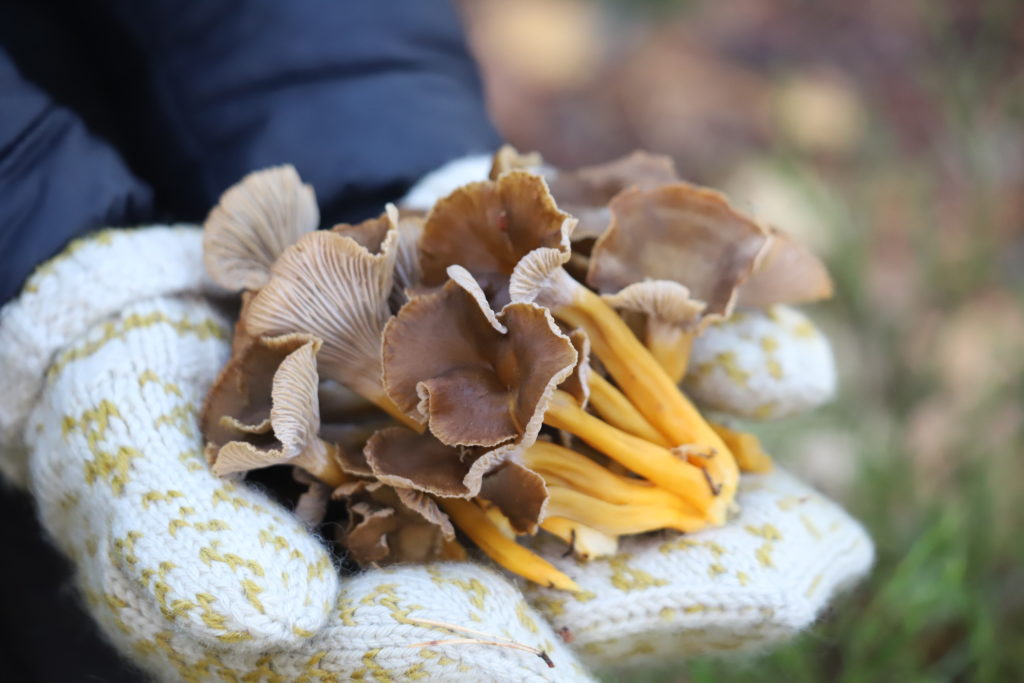
More than 75 percent of Finland’s land area is covered by forest. Finland is the most forested country in Europe (Maa- ja metsätalousministeriö). A growing forest needs light, water and carbon dioxide for photosynthesis. Growing forests are both carbon sinks and carbon reserves. During the photosynthesis, trees and plants give off oxygen and bind carbon dioxide. This means that the forest is a carbon sink, i.e. it binds carbon dioxide found in the atmosphere to a carbon reserve in the trees and soil.
When the forest no longer grows, it is still a carbon reserve that prevents carbon from escaping into the atmosphere. The forests in Finland are carbon sinks as long as the growth is greater than the departure. (UPM.)
In 2021, more forest was felled than the year before, and the amount of felling was the second largest ever measured. The trees are being felled at a younger age than before, and the growth of the forests seems to have slowed down at the same time, which may affect the size of the carbon sink in future years as well. (Ympäristöministeriö 2022)
Finland’s goal is to be climate neutral by 2035. In the Climate Annual Report, the Prime Minister reports annually to the parliament on how Finland’s emissions have developed and how progress has been made towards the goals set for the emission reduction. The last report showed that by 2021 Finland’s total emissions, i.e. the combined emissions of the responsibility sharing sector and the emissions trading sector, were at almost the same level as the year before but the most worrying information is that the land use sector became a net emitter instead of a net carbon sink for the first time. (Ibid.)
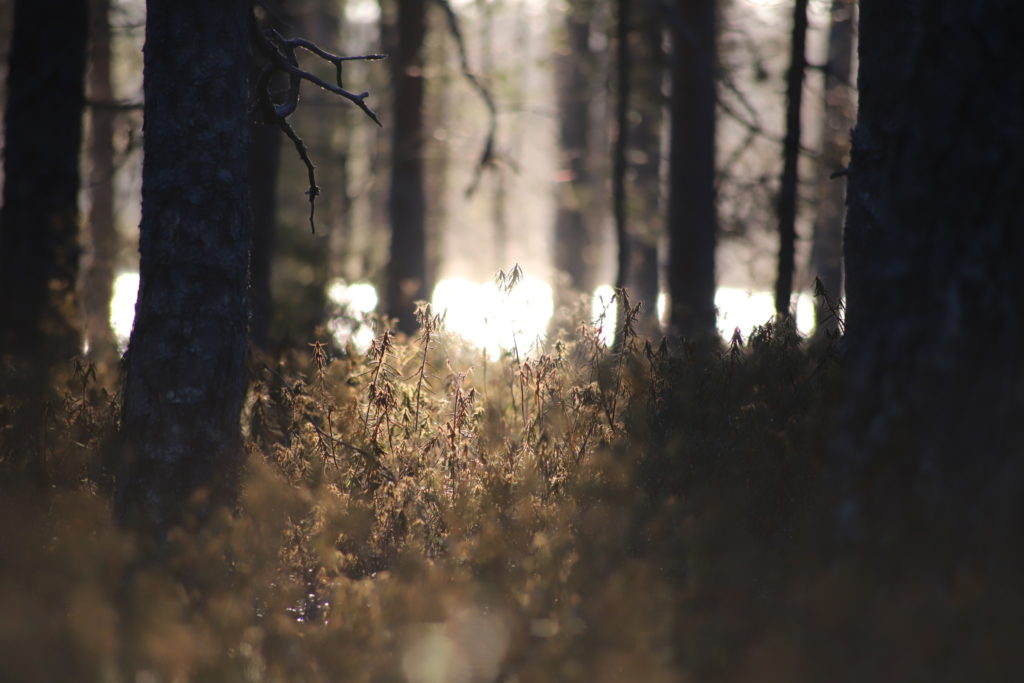
Finland’s Minister of the Environment and Climate, Maria Ohisalo, points out that in terms of reducing emissions, Finland is moving towards the goal of a climate-neutral Finland in 2035, but when it comes to sinks, the situation looks difficult. Ohisalo argues that Finland’s climate neutrality in 2035 rests on us simultaneously reducing our emissions and increasing our carbon sink and she points out that Finland will need a rescue package for sinkholes. (Ibid.)
In other words, we need new ways of using our woods. Here entrepreneurship and new innovations can play a decisive role in preserving the carbon sink effect of forests and biodiversity if they manage to find new approaches to the traditional use of the woods.
Nature entrepreneurship
In a nature company, nature is the basis for the entire business. A nature company is often a one-man or family business. Quite typical for a nature company is that the business often varies depending on the season. Companies dealing with various forms of nature tourism are also counted as nature companies. This also includes small-scale utilization of wood in various crafts, picking and further processing of berries, mushrooms, herbs and other natural products. A nature company can also offer consulting and training in nature and environmental conservation. (Hofman-Bergholm & Kåll-Fröjdö 2021)
The Natural Resources Institute (Luke) and the Finnish Forestry Center have, through a recent survey, mapped forest owners’ goals for forest ownership and their views on natural products. It turns out that the Finnish forest owners are interested in using natural products for economic purposes: almost 40% of all respondents could imagine producing natural products that are not covered by the right of commons. (Naturresursinstitutet 2022)
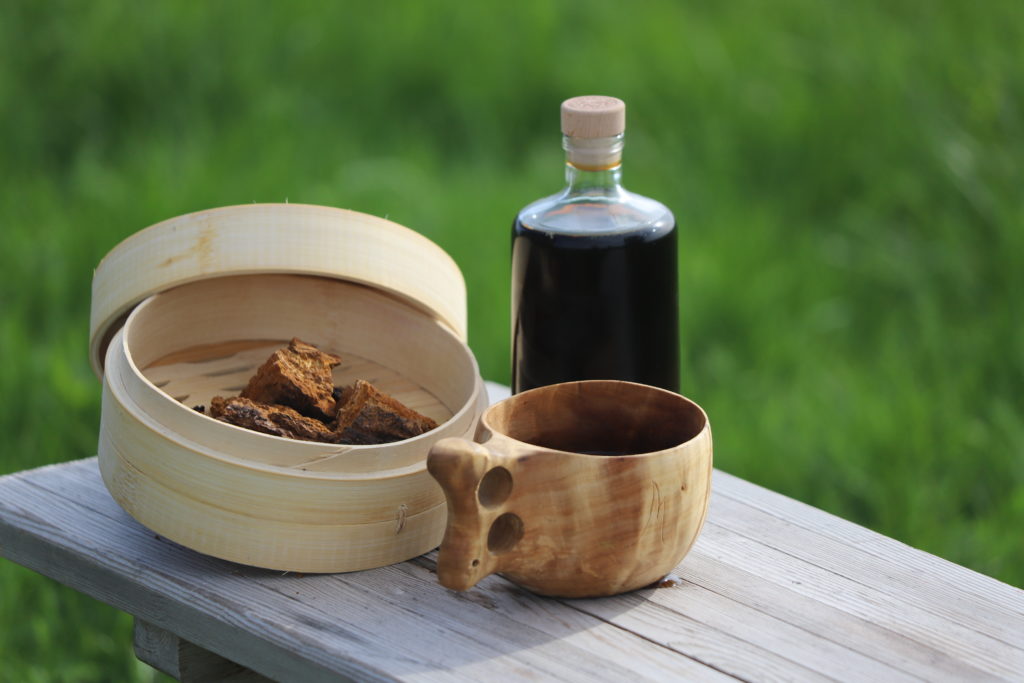
An equal number of forest owners would give an outside party the right to collect or produce products outside the common law (38%) or use the forests for tourism or program services (34%). This survey shows that there is interest, but at present only a few forest owners pick berries and mushrooms for sale (14% of all respondents) or produce products that fall outside the right of the common law (less than 4%). (Ibid.)
If we started to use the wood for these kind of products to a greater extent instead of an intensification of commercial forestry we could perhaps increase our carbon sink. Products made from wood and wood-based raw materials store carbon throughout their life cycle and can also constitute very long-term carbon reserves, for example in wooden construction (UPM). Foods that the forest has to offer are predominantly vitamin-rich products and the collection of them offers healthy fresh air and perhaps a welcome break from everyday stress.
Small-scale entrepreneurship utilizing forests for potentially promoting public health
First and foremost, the forest contains a lot of highly nutritious wild food such as blueberries, lingonberries, cranberries and mushrooms including for example polypores (chaga). Some of them have high potential but are not used in a commercial manner to a large extent. For example, the fairly forgotten crowberry contains more c-vitamin than the lingonberry and contains more protective antioxidants than other Finnish wild berries. (Yle 2018)
Secondly, spending time in forest areas is scientifically proved to give positive health effects. For further references see the Swedish University of Agricultural Sciences (SLU). Entrepreneurship that mainly takes place in the forest is thus a potentially healthy work environment for the entrepreneur. Nature entrepreneurship can be multifaceted and contain different sources of income which is important because of the seasonality. One way to broaden the product package for nature entrepreneurs is to offer the health effects of spending time in forests to customers.
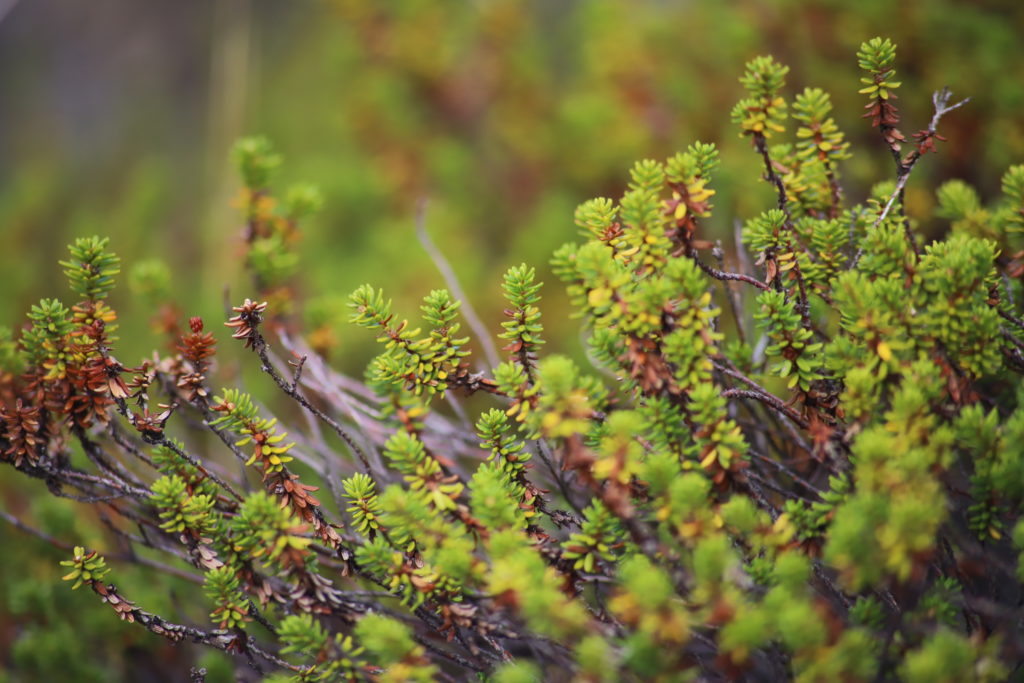
During year 2018-2022 an Interreg Botnia-Atlantica project, Nordic Nature Health Hub, tested measurement methods for recording the physiological and mental health effects of being in nature for the customers of nature entrepreneurs. The project tested 170 persons in Sweden and Finland after a stay in nature.
Both the subjective experience and the physiological impact of spending time in nature has been measured. A questionnaire was used to measure the subjective experience of nature. The questions are about how you feel, e.g. whether you feel tense or relaxed. ”It’s about fairly common feelings and experiences that you can imagine getting out in nature, such feelings and affects that you think occur more when you’re out in nature based on research and knowledge we have from before. It is a tool that we think has worked very well. Above all because it is easy to use,” says Lisbeth Slunga Järvholm, who is a professor at the Department of Public Health and Clinical Medicine at Umeå University and senior physician at Norrland University Hospital.
To measure the physiological impact, heart rate variability (HRV) has been measured. Lisbeth Slunga Järvholm describes it as an expression of the autonomic nervous system: ”You can describe this heart rate variability as expressing how activated or relaxed we are”. As for HRV, it is good to have a high variation, because it is a sign of recovery. A state of being constantly relaxed is, however, not something to strive for. ”Life is dynamic and you need to switch between activity and rest, recovery – because the body and brain need to be used. You lose certain functions if you are not active,” Lisbeth Slunga Järvholm points out.
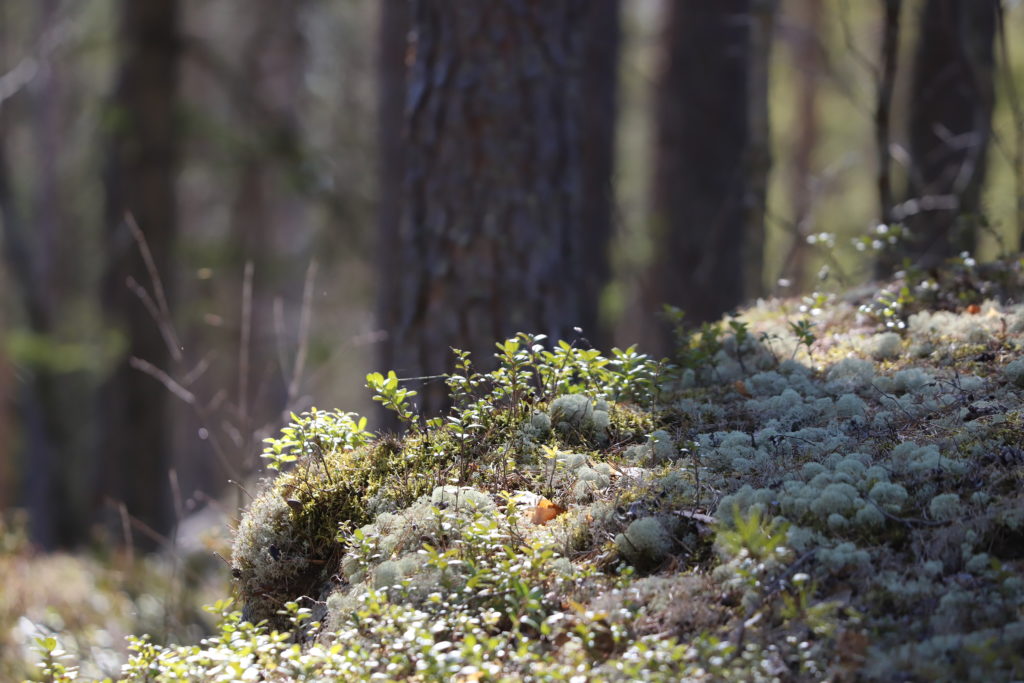
Results suggest that it is easier to see effects on subjectively experienced mood than HRV. Lisbeth Slunga Järvholm says that she would recommend measuring subjectively experienced mood because it is easy to measure and can also be considered reliable. This method has been used in various areas, e.g. in research on the health effects of nature, but also in sports medicine to detect early tendencies towards overtraining. ”Mood is something real and important that reflects how you are in balance, both mentally and physically. I think it’s a simple way of measuring, which is actually very good and which usually gives clear results that you can trust”, says Lisbeth Slunga Järvholm, ”on an individual level, HRV can also be valuable”.

Conclusion
In conclusion, wild food and forest products that utilize the forests in a way where the forest can still function as a carbon sink, are a potential field for innovations and small-scale entrepreneurship enhancing societal innovations. To develop alternative ways of benefiting products of the forest would be of use for as well forest owners, entrepreneurs as customers. It would also be a way of tackling the challenge of diminishing carbon sinks on a global level. For example, the HEADLINES project at Centria is working diligently to place a stronger emphasis on supporting companies and emerging entrepreneurs in the Food and Healthcare sectors.
References
Hofman-Bergholm, M. & Kåll-Fröjdö, S. 2021. Naturföretagarens guide till naturens hälsoeffekter och ett hållbart företagande. Vasa: Nordic Nature Health Hub.
Maa- ja metsätalousministeriö. Finlands skogstillgångar. Available at: https://mmm.fi/sv/skogar/skogsbruk/finlands-skogstillgangar Accessed on: 2 November 2022.
Naturresursinstitutet 2022. Skogsägarna är intresserade av sälja naturprodukter ur sina skogar – ekocertifiering lockar, men man vill inte betala för den. Available at: https://www.luke.fi/sv/nyheterna/skogsagarna-ar-intresserade-av-salja-naturprodukter-ur-sina-skogar-ekocertifiering-lockar-men-man-vill-inte-betala-for-den Accessed on: 2 November 2022.
SLU. Forskningsläget i detalj. Available at: https://www.slu.se/institutioner/skogens-ekologi-skotsel/forskning2/nordic-nature-health-hub/forskning/Forskningslaget_i_detalj/ Accessed on 2 November 2022.
UPM Skog. Skogen är både en kolsänka och en kolreserv. Available at: https://www.upmmetsa.fi/sv/information-och-evenemang/artiklar/skogen-ar-bade-en-kolsanka-och-en-kolreserv/ Accessed on: 2 November 2022.
Yle2018. Det bortglömda kråkbäret är ett superbär. Available at: https://svenska.yle.fi/a/7-1326390 Accessed on: 2 November 2022.
Ympäristöministeriö 2022. Klimatårsberättelsen 2022. Available at: https://ym.fi/sv/-/klimatarsberattelsen-2022-de-totala-utslappen-pa-nastan-samma-niva-som-tidigare-markanvandningssektorn-blev-utslappskalla-i-stallet-for-kolsanka Accessed on: 2 November 2022.
Pictures: Sara Kåll-Fröjdö
Maria Hofman-Bergholm
RDI-expert
Centria University of Applied Sciences
Tel. +358 40 356 3305
Sara Kåll-Fröjdö
RDI-expert
Centria University of Applied Sciences
Tel. +358 40 487 9634

